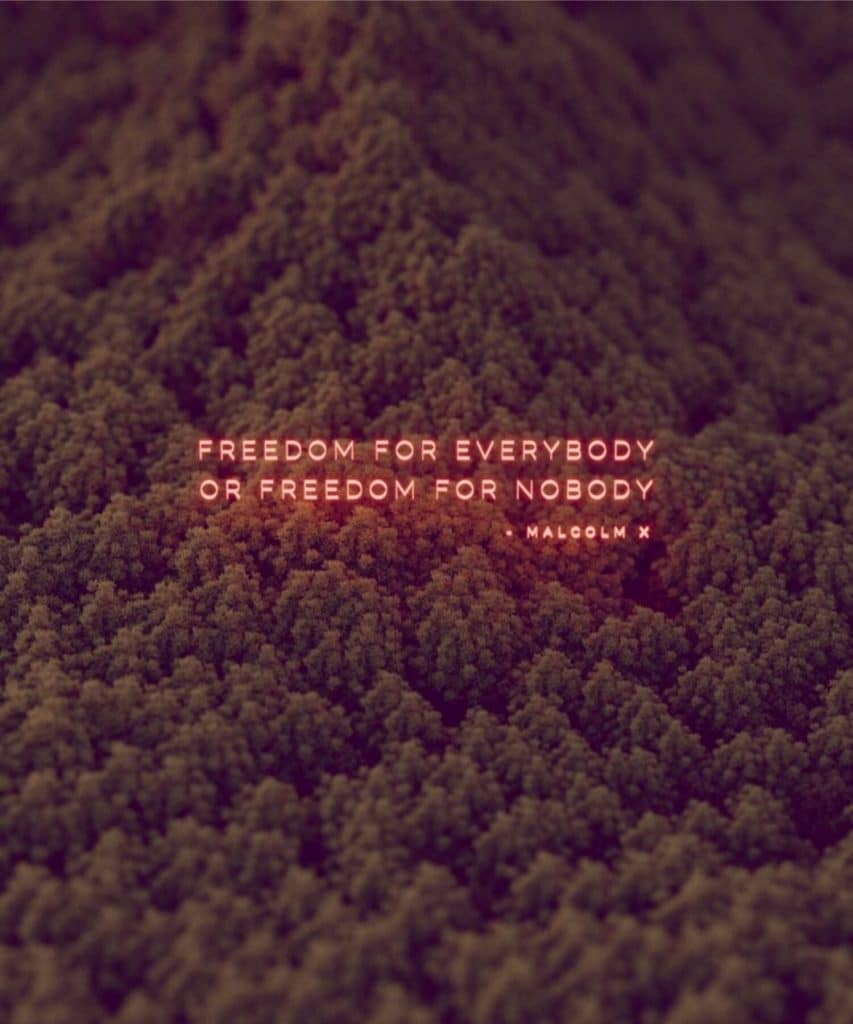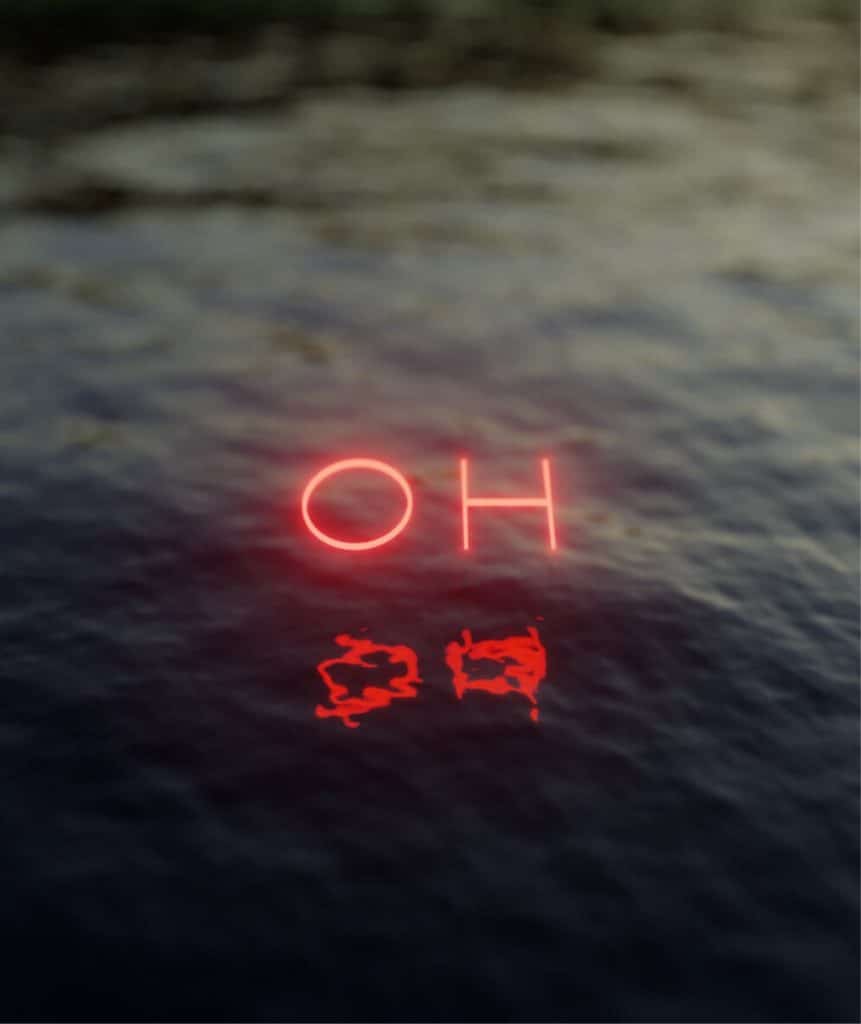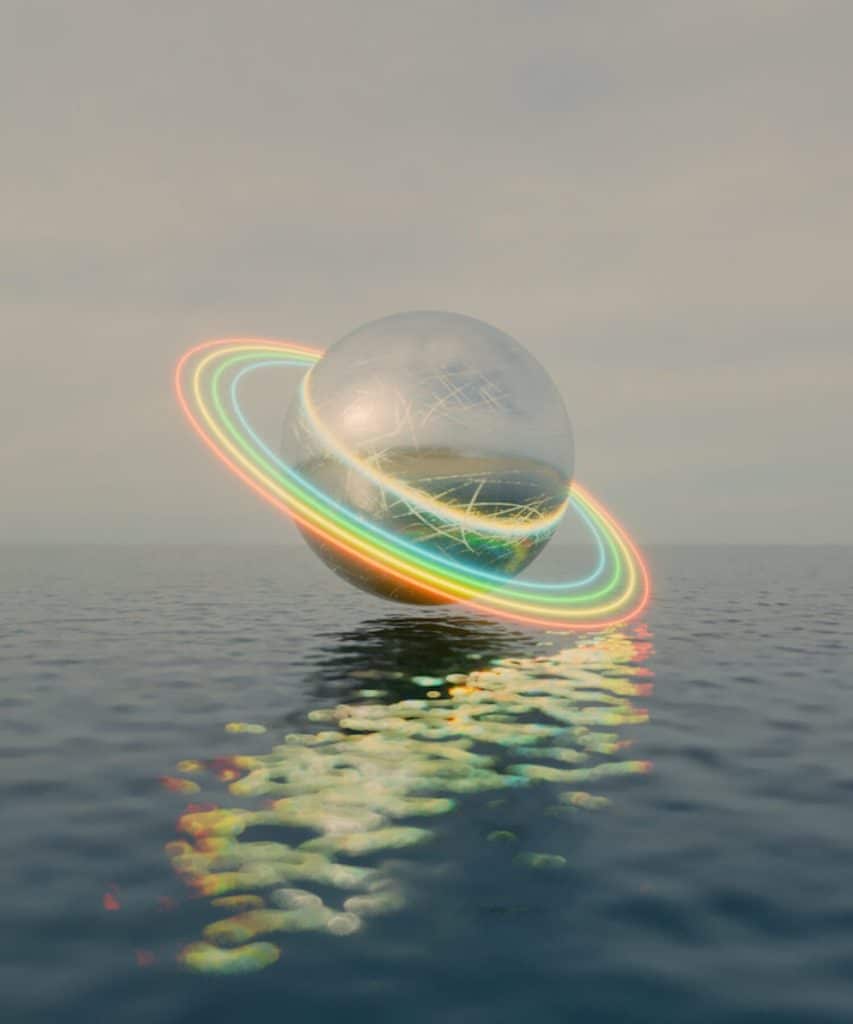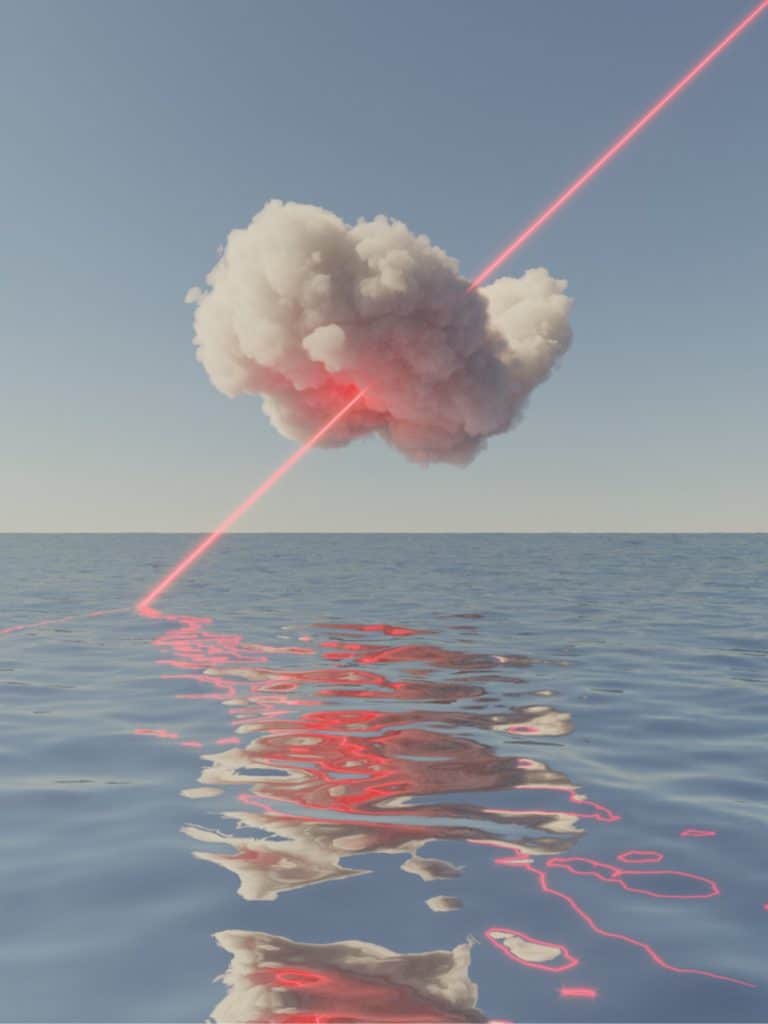
Many thanks for taking the time to chat with us about your stellar work. Your style of imagery looks like stills from a chimeric reverie. You incorporate light, reflections, and bodies of water. Can you tell us about your personal connections to these elements you choose to weave into your work?
Other than growing upright by the sea, and under the sun and stars, I’m not sure in what part of my brain to look. It’s a factory setting, I guess.
Coming from a background of poetry and as a critic of literature, to what extent has that influenced the way you frame your digital renderings and overall design?
I’m not sure, really. One day I realized I could express the same things I did as a poet, only now as a visual artist. When you have that language, it includes everything you’ve experienced, so once you start to use it, it becomes a natural, an environment. I wouldn’t have performed the same without my literary history, or my Italian adventures, for example. We all perform out of an experienced narrative.

It’s both moving and visually intriguing to see how you often centralize gossamer billows and bodies in your art. What would you like viewers to know about their significance?
These are poetic references to the cosmic presence in our ordinary, human lives. We sometimes tend to forget, we’re in this tremendous place, where the only limits we have are human shortcomings. And those are scientific facts.
When you layer your imagery with words, it’s almost like a sort of accompanying suggestion to the profoundness of the rendering. How do you go about choosing a phrase or word to couple with a specific image? What is your intention behind these inquisitive inscriptions?
Mostly, I try to address a generation of young people who are just about to define themselves, while not having anywhere to go, or can’t find any sound ideals. The baby-boomers destroyed the planet, and now people are being intellectually massacred by social media. I’ll give them one thing though; some of these kids are damn funny. When the boomers took our souls away and made us homeless and unemployed, we realized our value was zero. The only thing left, then, is to joke about it. A clown generation.

Can you explain how you arrived at becoming a digital artist and how this journey has developed for you over time? How different or similar was it to your work as a poet?
For a very long time, the intellectual climate in Sweden has been in hibernation, due to expectations of cultural and political consensus. So, working in that milieu for twenty or so years doesn’t really benefit someone with a language or movement of their own. More likely, that behavior is punished, meaning no job openings or no projects coming your way. Adding the fact that if you’re a cultural worker in Sweden not living in Stockholm, you’re overlooked and soon forgotten. Basically, finding myself in such a position, I needed to change the game. That said, being digital in that context really has no importance. I’m not seeing myself as a digital artist, to be honest. A computer is merely a tool. I’m an artist, and that should suffice.
What do you enjoy most about creating your visuals?
When you reach a certain critical point in your work with a piece, and it’s like sound and sight disappears for a moment, and you know you have made a piece that could outlive you.

INFORMATION
All images by David Stenbeck, Courtesy of Jenn Singer Gallery

